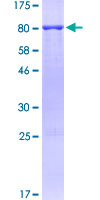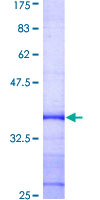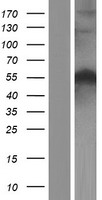Login
Registration enables users to use special features of this website, such as past
order histories, retained contact details for faster checkout, review submissions, and special promotions.
order histories, retained contact details for faster checkout, review submissions, and special promotions.
Forgot password?
Registration enables users to use special features of this website, such as past
order histories, retained contact details for faster checkout, review submissions, and special promotions.
order histories, retained contact details for faster checkout, review submissions, and special promotions.
Quick Order
Products
Antibodies
ELISA and Assay Kits
Research Areas
Infectious Disease
Resources
Purchasing
Reference Material
Contact Us
Location
Corporate Headquarters
Vector Laboratories, Inc.
6737 Mowry Ave
Newark, CA 94560
United States
Telephone Numbers
Customer Service: (800) 227-6666 / (650) 697-3600
Contact Us
Additional Contact Details
Login
Registration enables users to use special features of this website, such as past
order histories, retained contact details for faster checkout, review submissions, and special promotions.
order histories, retained contact details for faster checkout, review submissions, and special promotions.
Forgot password?
Registration enables users to use special features of this website, such as past
order histories, retained contact details for faster checkout, review submissions, and special promotions.
order histories, retained contact details for faster checkout, review submissions, and special promotions.
Quick Order
BECN1 / Beclin-1
beclin 1, autophagy related
Beclin 1 is a coiled coil protein that interacts with prototypic cellular antiapoptotic gene Bcl2. Beclin 1 is widely expressed with highest levels reported in skeletal muscle. Three alternativaly spliced isoforms have been identified. Allelic deletion of beclin 1 results in a wide variety of cancers including breast cancer.
| Gene Name: | beclin 1, autophagy related |
| Synonyms: | BECN1, ATG6, Beclin 1, Beclin 1, autophagy related, Beclin1, GT197, Protein GT197, VPS30, Beclin-1 |
| Target Sequences: | NM_003766 NP_003757.1 Q14457 |
Publications (36)
1
A human scFv antibody against TRAIL receptor 2 induces autophagic cell death in both TRAIL-sensitive and TRAIL-resistant cancer cells. Park KJ, Lee SH, Kim TI, Lee HW, Lee CH, Kim EH, Jang JY, Choi KS, Kwon MH, Kim YS. Cancer research. 2007 67:7327-34. (WB, IP; Human)
[PubMed:17671202]
2
Loss of macroautophagy promotes or prevents fibroblast apoptosis depending on the death stimulus. Wang Y, Singh R, Massey AC, Kane SS, Kaushik S, Grant T, Xiang Y, Cuervo AM, Czaja MJ. The Journal of biological chemistry. 2008 283:4766-77. (ICC, WB; Mouse)
[PubMed:18073215]
[PMC:PMC2754125]
3
Early cellular changes after blockage of chaperone-mediated autophagy. Massey AC, Follenzi A, Kiffin R, Zhang C, Cuervo AM. Autophagy. 2008 4:442-56. (WB; Mouse)
[PubMed:18253088]
☰ Filters
Products
Proteins
(10)
Type
Over-Expression Lysate
(2)
Recombinant
(8)
Target
BECN1 / Beclin-1
(10)
Publications
No
(10)
Tag
6His-SUMO, N-terminus
(1)
GST, N-terminus
(2)
His
(3)
His-T7
(1)
Myc-DDK (Flag)
(3)
Species
Human
(8)
Mouse
(1)
Source
293T Cells
(1)
E. coli
(5)
HEK 293 Cells
(2)
Wheat Germ Extract
(2)
Purification
Purified
(4)
Low Endotoxin Level
Low endotoxin level
(1)

Wheat Germ Extract
GST, N-terminus
78.3 kDa
10 µg/$479; 25 µg/$670

E. coli
His
20 µg/$361; 100 µg/$739; 4 µg/$261

Wheat Germ Extract
GST, N-terminus
10 µg/$479; 25 µg/$670

HEK 293 Cells
Myc-DDK (Flag)
51.7 kDa
20 µg/$1,107

HEK 293 Cells
Myc-DDK (Flag)
51.7 kDa
100 µg/$494
293T Cells
Myc-DDK (Flag)
51.7 kDa
20 µg/$150
E. coli
200 AA
His
Less than 0.1 EU/µg protein (determined by LAL method).
22.11 kDa
10 mg/$4,268; 5 mg/$3,201; 1 mg/$1,868; 0.5 mg/$1,475; 200 µg/$1,103; 100 µg/$756; 50 µg/$531
E. coli
His
~54kDa (SDS-PAGE)
10 µg/$414

E. coli
6His-SUMO, N-terminus
1 mg/$1,679; 100 µg/$598; 20 µg/$405

E. coli
His-T7
35.2 kDa
10 µg/$282; 50 µg/$447; 100 µg/$715; 200 µg/$892; 1 mg/$2,005; 500 µg/$1,543; 5 mg/$3,123; 2 mg/$2,192
Viewing 1-10
of 10
product results
If you do not find the reagent or information you require, please contact Customer.Support@LSBio.com to inquire about additional products in development.









